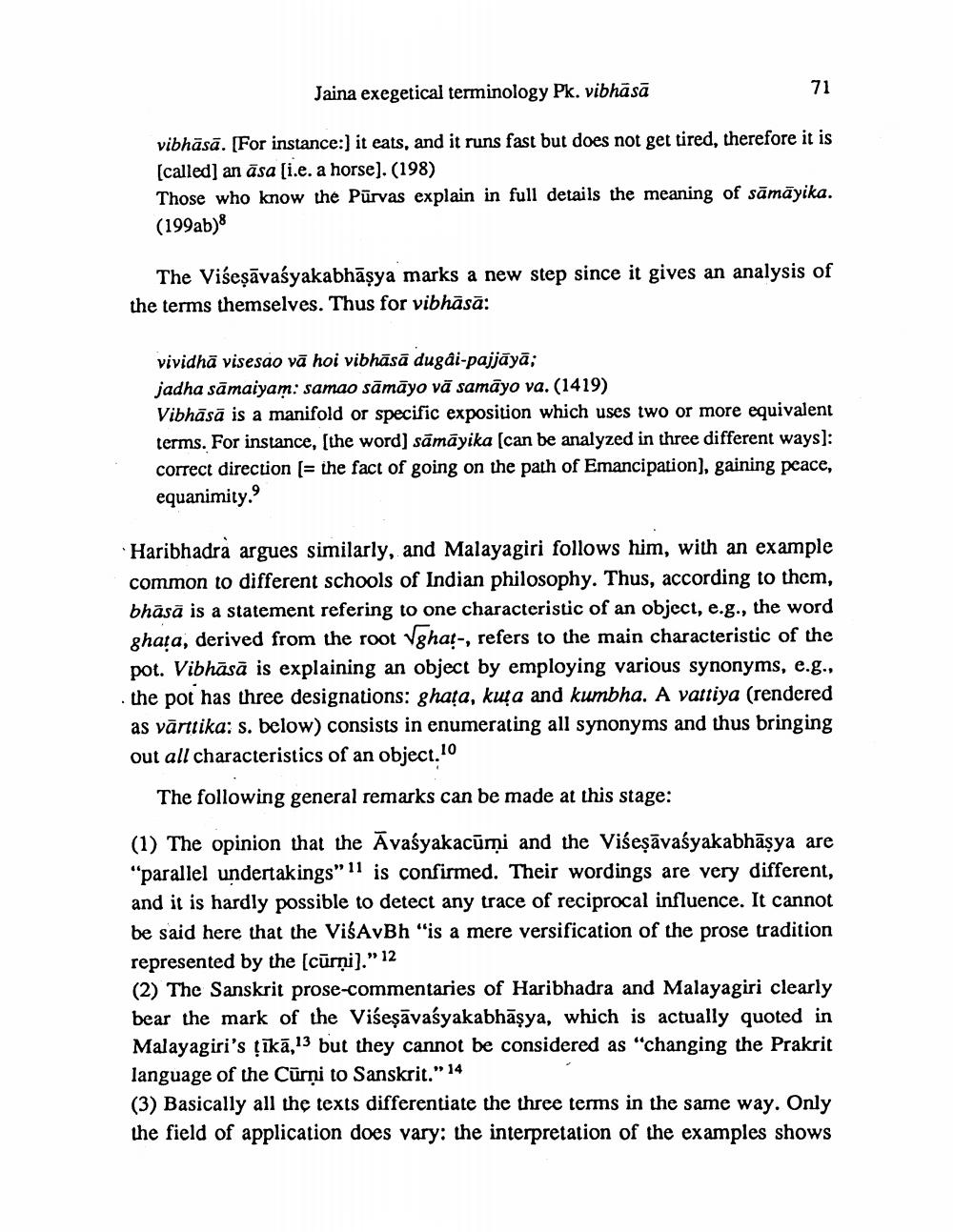Book Title: Jaina Exegetical Terminology Pk Vibhasa Detailed Exposition Author(s): Nalini Balbir Publisher: Nalini Balbir View full book textPage 5
________________ Jaina exegetical terminology Pk. vibhāsā 71 vibhāsā. (For instance:) it eats, and it runs fast but does not get tired, therefore it is (called) an āsa [i.e. a horse). (198) Those who know the Pūrvas explain in full details the meaning of sāmāyika. (199ab)8 The Viseşāvaśyakabhāşya marks a new step since it gives an analysis of the terms themselves. Thus for vibhāsā: vividhā visesao vā hoi vibhāsā dugai-pajjāyā; jadha sāmaiyam: samao sāmāyo vä samāyo va. (1419) Vibhāsā is a manifold or specific exposition which uses two or more equivalent terms. For instance, (the word) sāmāyika (can be analyzed in three different ways]: correct direction (= the fact of going on the path of Emancipation), gaining peace, equanimity. · Haribhadra argues similarly, and Malayagiri follows him, with an example common to different schools of Indian philosophy. Thus, according to them, bhāsā is a statement refering to one characteristic of an object, e.g., the word ghata, derived from the root Vghat-, refers to the main characteristic of the pot. Vibhāsā is explaining an object by employing various synonyms, e.g., the pot has three designations: ghata, kuta and kumbha. A vattiya (rendered as vārtika: s. below) consists in enumerating all synonyms and thus bringing out all characteristics of an object.10 The following general remarks can be made at this stage: (1) The opinion that the Āvaśyakacūmi and the Višeşāvaśyakabhāşya are "parallel undertakings" 11 is confirmed. Their wordings are very different, and it is hardly possible to detect any trace of reciprocal influence. It cannot be said here that the ViśAvBh "is a mere versification of the prose tradition represented by the (cūrņi)." 12 (2) The Sanskrit prose-commentaries of Haribhadra and Malayagiri clearly bear the mark of the Višeşāvasyakabhāşya, which is actually quoted in Malayagiri's tīkā,13 but they cannot be considered as "changing the Prakrit language of the Cūrņi to Sanskrit." 14 (3) Basically all the texts differentiate the three terms in the same way. Only the field of application does vary: the interpretation of the examples showsPage Navigation
1 ... 3 4 5 6 7 8 9 10 11 12 13 14 15 16 17 18
